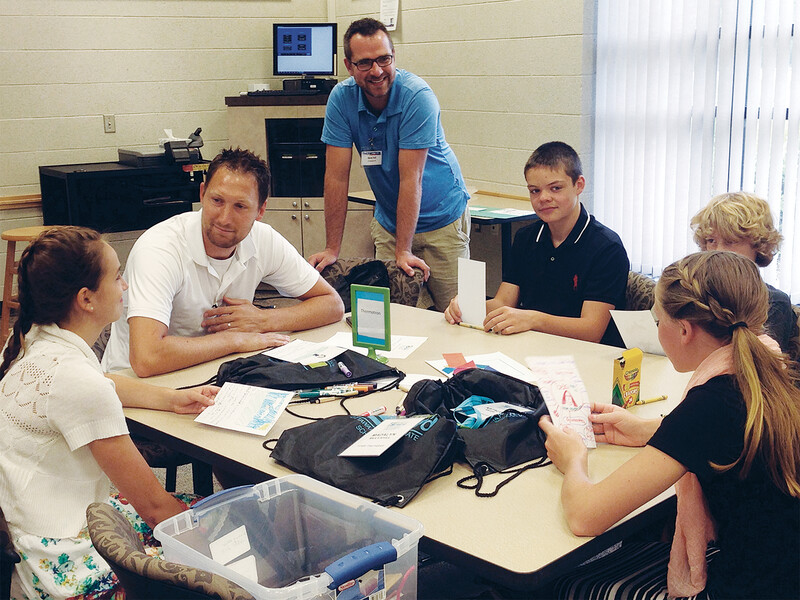Reasonable people can disagree on both the what and the how of schools. We can—and should—debate the merit of Common Core, the use of technology, the value of charter schools, and so on. But one constant is that students learn best when their parents or guardians are engaged in their education, regardless of a school's location, its demographics, or the age of its students.
Every school leader knows that this is true—and that it's difficult to make it happen. Parents seem busier than ever. To be fair, schools often aren't the most welcoming places. We limit parents' access to certain times and specific spaces. I understand why we do that, but the message can unintentionally become that this is our house, family members are just visitors, and they shouldn't make themselves too comfortable. And if parents weren't successful as students themselves—or if their children aren't succeeding now—feelings about failure become another barrier.
Ideas from the Crowd
So what can we do? I recently raised this question by e-mail with some principals and received many good ideas, which I've clustered into three general groups. These strategies may not all appeal to you, but certainly some of them will increase your school's parent involvement.
Set the Stage
I cannot overemphasize how important it is that parents feel they belong in the school. Parents who feel welcome are more likely to be involved. Liz in West Virginia offers coffee each morning, hosted by a member of the administrative team. Similarly, when I was a principal, an area across from my office featured easy chairs and a coffee pot with a sign "Parents, have a cup of coffee. Linger with us!" Whether parents lingered or not, the signage and comfy furniture sent a clear signal that they were welcomed.
I also asked teachers to contact each student's parents or guardians at the start of the year with some positive news about their child. The 5:1 rule (give five positives for every negative) applies here. Doing this is a wise investment of time.
As a principal in Missouri, Tiffany obtained a clothes washer and dryer for parent use. The "cost" to use the machines was volunteering for an hour. Another educator, Robyn, cited a school that offered free spaghetti dinners at which teachers engaged parents on how to help with homework and addressed parents' questions.
Another strategy is a Parent Participation Meeting described by Lew in Virginia:
All the parents had to do was come to the school, have food and fellowship with everyone, participate in a small-group focused activity, and anonymously offer valuable input. The faculty acted as group facilitators at these evening meetings.
Educate Everyone
Workshops for parents focused on issues and interests relevant to their child's stage in life engage parents and build positive relationships. Carly in New Mexico developed a parent coffee series focused on cyber health, ethical dilemmas, the adolescent brain, distress tolerance, and gender fluidity. A speaker, video, or set of reflective questions is often the "provocation" to start these conversations and the engagement with parents.
Duff in Singapore offers monthly parent coffees featuring guest speakers and parent book groups. Books discussed include The Drama Years: Real Girls Talk about Surviving Middle School (Free Press, 2012) and Raising Cain: Protecting the Emotional Life of Boys (Ballantine Books, 2000).
I used to invite parents to "Breakfast with Tom" and promote the gathering by saying the agenda was theirs. I welcomed whatever topics parents wanted to know or share about. These discussions were helpful to everyone. I was always amazed at the misinformation that wafted around the halls, which these meetings enabled me to correct and clarify.
The chance to see students perform greatly increases family attendance at school events. Josh in New York begins his monthly PTA meetings by having students teach about a topic, lead a discussion, or show problem-solving strategies they've learned. It can be harder to involve parents of older students, so invite them to the presentations, exhibitions, and performances at which students demonstrate their understanding and mastery. Doing this also improves assessment validity.
Valeska in Missouri takes parent involvement to a deeper level by inviting the four PTO officers to join her biweekly leadership meetings. Topics include academics, attendance and behavior, and parent involvement, but she avoids issues that might present a conflict of interest. Valeska observes, "Parents give so much input to our team, and we greatly appreciate the advice and sometimes critical feedback. They have a section on the agenda and are expected to share and get feedback from us."
Tap into Technology
It seems that everyone is cyber-connected, so why not take advantage of this for our parent communications? A regular e-letter, complete with links to relevant articles and student performances, is a must. Several apps (such as Bonfyre and ClassDojo) offer easy ways for teachers to communicate with parents during the day by sharing pictures of students learning and perhaps texting about what's happening in school—or having students do this. Real-time information encourages involvement.
Rhonda creates a video library of activities in her classroom and makes them available to parents. Wendy in Minnesota talks about principals she knows who regularly take a selfie and tweet it with #GoodNewsCallOfTheDay. The uses of technology may vary, but the constant is giving parents good news in real time.
And Finally …
A key part of involving parents is listening to them, even when—especially when—we may not want to hear what they're saying. That includes making time to be part of a conversation, calling or e-mailing parents at random to see how things are going (at times I called five parents each night), and using surveys to formally gather perceptions.
The energy we invest to pursue parent involvement will benefit our students. What strategies work for you?








